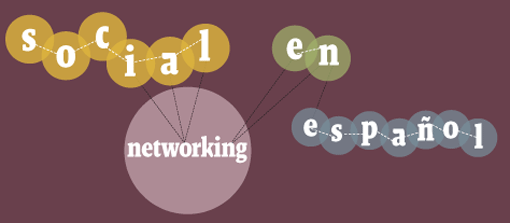When Facebook en español launched last year, Marta Vélez, a Bogotá homemaker, received an invitation to join from her daughter Alejandra in New York. She’s still working through some of the technical hassles, but Marta couldn’t be more pleased. “The part about putting up photos still seems pretty tricky, but I can look at my daughter’s photos,” says Marta, who now checks her Facebook messages every morning over breakfast. She’s not alone. In Latin America, the use of social networks in cyberspace has increased 83.3 percent over the past year, according to a study by the Spanish consulting group, Tendencias Digitales. The group’s 2008 annual report noted that networks such as Facebook have grown 828 percent in the region in one year’s time. This incredible growth coincided with the launch in the beginning of 2008 of new social networking sites in Spanish. Among the most popular are Facebook, MySpace, hi5, Orkut, Sónico, and Fotolog.
Brazil was among the first to join the trend. In 2004, Brazilians, who spend as much time online as their U.S. counterparts and are the third largest buyer of computers in the world, went nuts for Orkut, the social network launched by Google. For the first six months the space functioned exclusively in English, but it soon became so flooded with messages in Portuguese that English-speaking users felt overwhelmed. By 2008, 54 percent of Orkut’s users were Portuguese speakers, far surpassing their English-speaking counterparts. Today in Brazil asking for somebody’s “Orkut name” is as normal as asking for their telephone number or email.
Online social networks are on course to repeat that phenomenon in the Spanish-language market, with 47.5 million Web users, according to Tendencias Digitales. They have already registered spectacular success. Sónico, an Argentine group, grew to 20 million users in just half a year. Tomy Lorsch, the Argentine director of the Madrid-based digital consulting group Findasense, says that such spectacular growth is not surprising. “Spanish is the third language in the world, and the Latin American market is one of the fastest growing worldwide. . . This expansion was inevitable.”
Many Latin Americans have already begun to integrate cyber-networking into their professional and personal lives. Mexican businessman Miguel Angel Oliva, vice president of Public Relations and Corporate Affairs for HBO Latam, spends one to two hours daily updating his profiles on Facebook and on LinkedIn, arguably the world’s most widely used professional contacts network. “It instantaneously catches me up on everything that is happening in my friends’ lives,” he says about Facebook. These networks are an indispensable part of Oliva’s working day. “LinkedIn allows me to monitor how my contacts are progressing professionally, and has even brought about a few job offers,” he says. Not surprisingly, the LinkedIn phenomenon has been a boon for headhunters. “Ninety-three percent of all businesses look at job applicants’ LinkedIn profiles,” says Florencia Pettigrew, who manages LinkedIn’s international marketing. “In a way, it has replaced the traditional résumé.” LinkedIn, which launched its Spanish version in February 2008, currently boasts more than 30 million users worldwide and reports growth of between 3 and 5 percent since launching the Spanish version in February 2008.
Nevertheless, there may be limits to how much further these social cyber-networks can expand. Some users already complain that they are receiving less than they expected. Maria Cecilia Albino, an Argentine designer based in Mendoza, is sharply critical of LinkedIn. “I joined LinkedIn three months ago and I haven’t had any activity,” she says. “With Facebook on the other hand, I’ve made a ton of contacts, [including] people who have hired me based just on seeing the photos I posted.” Maria Cecilia plans on leaving LinkedIn—a network that tends to work better with experts in more technical fields like marketing and finance—but will continue to update her Facebook profile daily.
There are also security issues. The case of Fernando Martí, a 14-year-old Mexican boy who was kidnapped and killed last June as a result of information he posted on his hi5 page, was a red flag in a region already buffeted by kidnappings and social violence. To what extent is it safe to disclose a user’s personal information when it is so easily accessed by millions? Who is responsible for the protection of this information?
Even the experts don’t seem to agree. Madrid-based technical consultant Enrique Dans feels that “individual users must set their own limits, but the networks should provide options for filtering and blocking.” Lorsch of Findasense believesthat the protection of personal information intensifies “when the network has enough users to push for a clearer privacy policy.” Clearly, at the rate these networks are growing, the numbers certainly will be there; the question is if security and other concerns don’t scare them off first.





